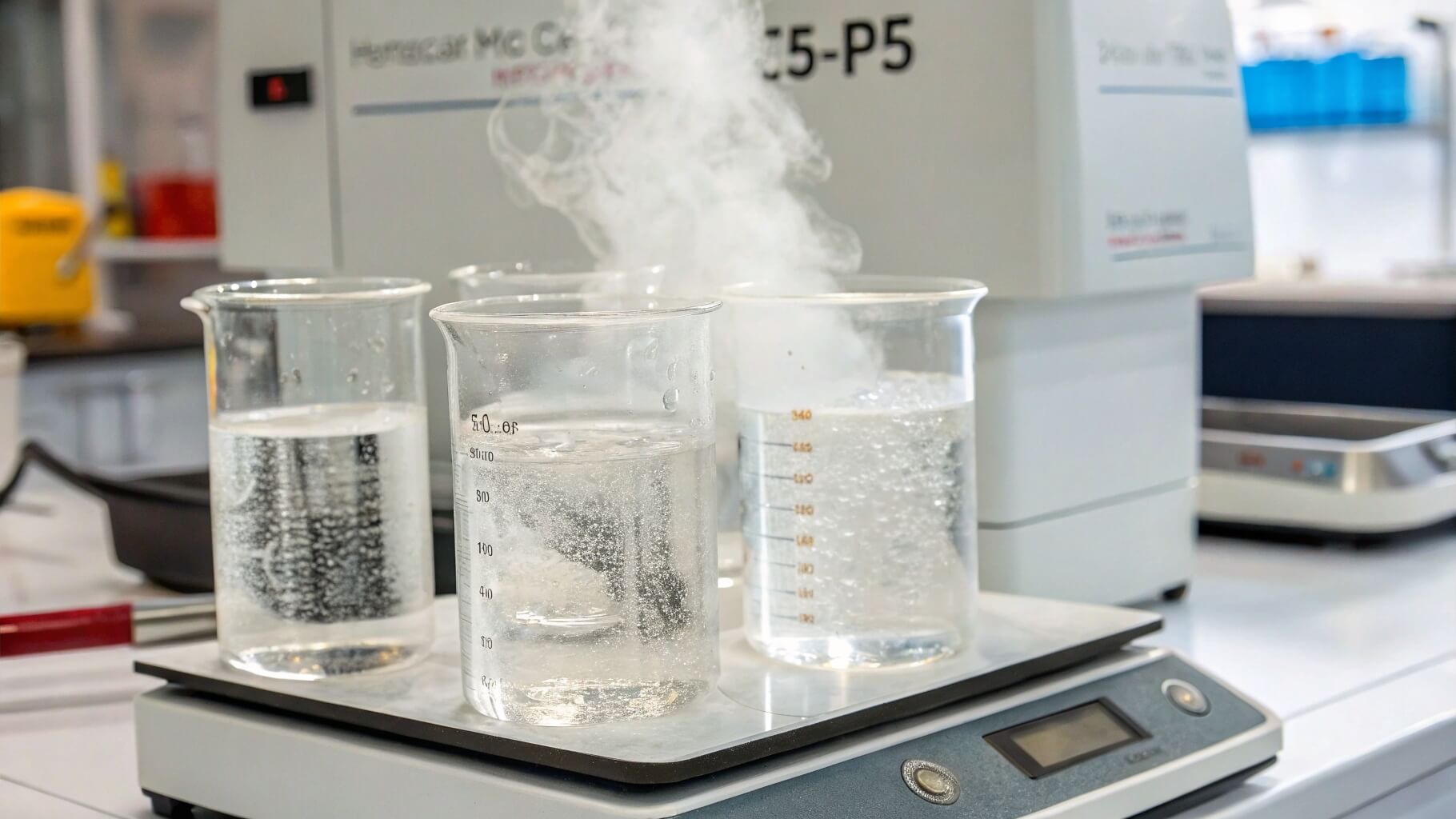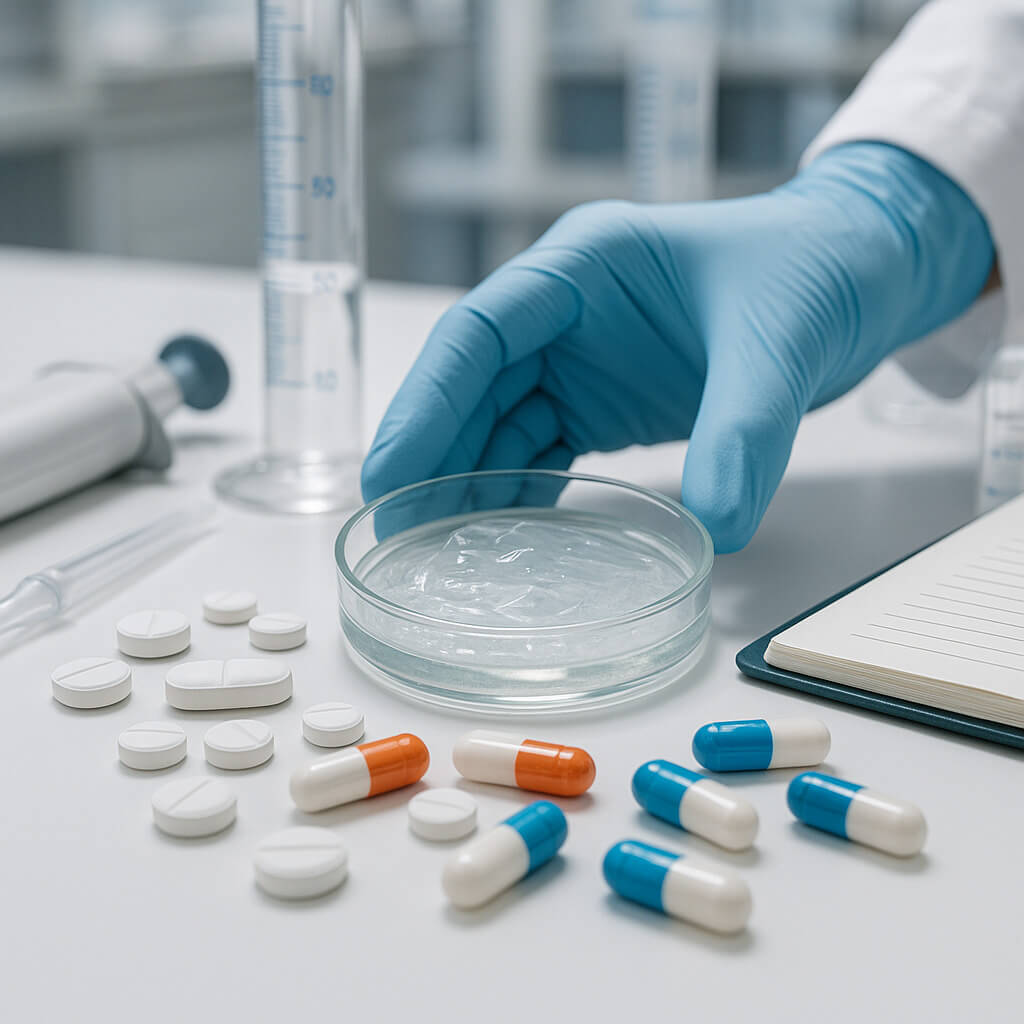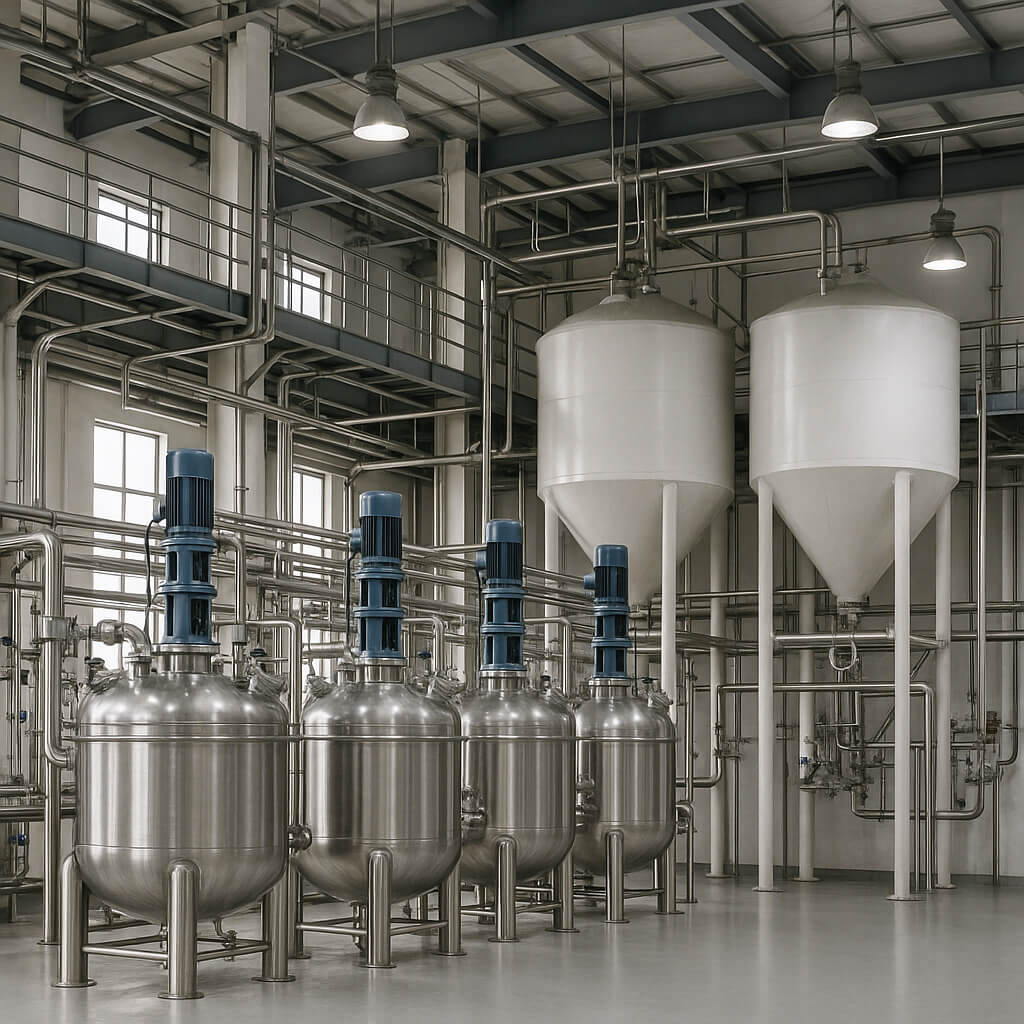HPMC E15 is widely used in pharmaceuticals, food, and industrial applications. But improper handling during dissolution can lead to clumping, incomplete hydration, or poor viscosity control. Getting the right temperature is crucial to avoid these issues.
HPMC E15 dissolves best when first dispersed in cold water (10-25°C) and then gradually heated to 40-60°C. Using hot water too soon causes premature gelation, making it difficult to achieve a smooth solution.

A visual representation of how HPMC E15 dissolves under different temperature conditions, highlighting optimal solubility.
To fully understand why temperature matters in dissolving HPMC E15, let’s first examine its composition and why solubility plays a critical role in its functionality.
What Is HPMC E15 and Why Does Its Solubility Matter?
HPMC E15 is a critical ingredient in pharmaceuticals, food, and industrial applications. But why does its solubility matter? If it doesn’t dissolve properly, it can lead to inconsistent viscosity, poor dispersion, and ineffective performance in formulations.
HPMC E15 is a water-soluble, non-ionic cellulose ether known for its film-forming, thickening, and stabilizing properties. Its solubility directly affects drug release rates, food texture, and the performance of construction materials.
Key Properties of HPMC E15
| Property | Description |
|---|---|
| Appearance | White to off-white powder |
| Viscosity | 12-18 mPa·s (2% solution) |
| Solubility | Cold water dispersible, dissolves fully at 40-60°C |
| pH Stability | 5.0 – 8.0 (1% solution) |
| Applications | Pharmaceuticals, food, construction, cosmetics |
Why Solubility Matters in Different Applications
- Pharmaceuticals – Used for controlled drug release and film coating. Poor solubility can lead to inconsistent medication efficacy.
- Food Industry – Acts as a thickener and stabilizer. If not properly dissolved, it may affect product texture and stability.
- Construction Materials – Helps retain moisture in cement-based adhesives. Poor solubility can weaken adhesion and workability.
Understanding how HPMC E15 dissolves and which factors influence its solubility is essential for optimizing its performance. Next, we’ll explore the exact temperature range where HPMC E15 dissolves best and how to achieve proper dissolution.
At What Temperature Does HPMC E15 Dissolve?
HPMC E15 dissolves in water, but temperature plays a key role in achieving smooth dispersion and complete solubility. If the water is too cold, the polymer hydrates too slowly. If it’s too hot, premature gelation occurs, making further dissolution difficult. So, what is the ideal temperature for dissolving HPMC E15?
HPMC E15 dissolves best when first dispersed in cold water (10-25°C) and then gradually heated to 40-60°C for full dissolution. Hot water above 70°C leads to rapid gel formation, preventing proper hydration.
Optimal Temperature Ranges for HPMC E15 Solubility
| Temperature Range | Effect on HPMC E15 |
|---|---|
| Below 10°C | Slower hydration, increased viscosity over time. |
| 10-25°C (Cold Water) | Best for initial dispersion; prevents clumping. |
| 40-60°C (Warm Water) | Promotes full dissolution after hydration. |
| Above 70°C | Causes instant gelation, leading to uneven dispersion. |
Best Practices for Achieving Complete Dissolution
- Cold Water Dispersion (10-25°C) – Slowly sprinkle HPMC E15 into cold water while stirring to prevent clumping.
- Hydration Phase (15-60 min) – Allow the polymer to fully absorb water before applying heat.
- Gradual Heating (40-60°C) – Helps break down the polymer structure for full solubility.
- Avoid Excessive Heat (>70°C) – High temperatures cause the polymer to gel prematurely, making further dissolution difficult.
By carefully managing water temperature and hydration time, HPMC E15 can dissolve effectively, ensuring optimal performance in pharmaceutical, food, and industrial applications. Next, we’ll explore the science behind HPMC E15’s solubility mechanism and why these temperature guidelines matter.
The Solubility Mechanism of HPMC E15
Dissolving HPMC E15 is more complex than simply mixing it with water. If the process isn’t controlled, issues like clumping, incomplete hydration, or premature gelation can occur. Understanding its solubility mechanism helps ensure smooth dispersion and optimal functionality.
HPMC E15 dissolves through a two-step process: hydration and dispersion. Initially, it swells in cold water, allowing water molecules to penetrate its structure. Once hydrated, moderate heating (40-60°C) further promotes full dissolution[^1].
[^1]: Discover the factors affecting polymer dissolution to enhance your understanding of material behavior in different conditions.
Step-by-Step Solubility Process of HPMC E15
-
Hydration (Cold Water Phase, 10-25°C)
- HPMC E15 absorbs water and swells.
- Polymer chains separate, allowing water penetration.
- The solution appears cloudy at this stage.
-
Gel Formation (If Water is Too Hot, >70°C)
- Immediate gelation occurs if HPMC E15 is exposed to high temperatures.
- This prevents full hydration, leading to uneven dispersion.
-
Dissolution (Warm Water Phase, 40-60°C)
- Once hydrated, moderate heating accelerates solubility.
- Stirring at moderate speed ensures uniform dispersion.
- The solution becomes clear or slightly translucent.
Factors Affecting the Solubility Mechanism
| Factor | Impact on Solubility |
|---|---|
| Water Temperature | Cold water aids hydration, warm water completes dissolution. |
| Mixing Speed | Moderate stirring prevents foam formation and uneven dispersion. |
| Concentration | Higher concentrations require longer dissolution times. |
| pH Level | Optimal range 5.0-8.0 for maintaining stability. |
Key Takeaways for Optimal Dissolution
- Sprinkle HPMC E15 gradually into cold water for proper dispersion.
- Allow 15-60 minutes for hydration before applying heat.
- Use moderate heat (40-60°C) to accelerate dissolution.
- Avoid rapid mixing or high shear forces, which can trap air bubbles and impact viscosity.
By following these steps, HPMC E15 can be efficiently dissolved, ensuring smooth functionality in pharmaceutical, food, and industrial applications. Next, we’ll explore practical techniques for dissolving HPMC E15 efficiently and avoiding common mistakes.
How to Dissolve HPMC E15 Efficiently?
Dissolving HPMC E15 requires proper handling to prevent clumping, incomplete dispersion, or excessive foaming. If not done correctly, the solution may not achieve the desired viscosity and stability, affecting its performance in various applications.
To dissolve HPMC E15 efficiently, start with cold water (10-25°C) for initial dispersion, allow sufficient hydration time, and then gradually heat to 40-60°C. Proper mixing techniques and pH control further improve solubility.
Step-by-Step Guide to Dissolving HPMC E15
-
Cold Water Dispersion (10-25°C)
- Slowly sprinkle HPMC E15 into cold water while stirring.
- Avoid dumping all at once to prevent clumping.
-
Hydration Phase (15-60 min)
- Let the polymer fully hydrate before applying heat.
- Stir gently at moderate speed to ensure uniform dispersion.
-
Gradual Heating (40-60°C)
- Once hydrated, heat the solution slowly to accelerate dissolution.
- Avoid temperatures above 70°C, which can cause premature gelation.
-
Final Mixing
- Stir continuously until the solution becomes clear or slightly translucent.
- Use a moderate-speed overhead stirrer to prevent foaming.
Best Practices for Faster and Smoother Dissolution
| Factor | Best Practice |
|---|---|
| Water Temperature | Start with cold water, then gradually heat to 40-60°C. |
| Mixing Speed | Moderate stirring prevents air bubbles and foaming. |
| Pre-Wetting Method | For high concentrations, pre-mix with ethanol or glycerin before adding to water. |
| pH Control | Maintain pH 5.0-8.0 to stabilize viscosity. |
Common Mistakes to Avoid
- Adding HPMC too quickly → Causes clumping.
- Using hot water initially → Leads to gel formation before full dispersion.
- Over-mixing at high speed → Introduces air bubbles, affecting viscosity.
By following these optimized techniques, HPMC E15 can dissolve efficiently, ensuring uniform viscosity, smooth texture, and stable performance across various industries. Next, we’ll compare the behavior of HPMC E15 in cold vs. hot water to understand its solubility better.
HPMC E15 in Cold vs. Hot Water: What’s the Difference?
Dissolving HPMC E15 requires precise temperature control. Using cold water ensures proper dispersion, while hot water can cause premature gelation, leading to uneven solubility. So, how do these two methods compare?
HPMC E15 disperses best in cold water (10-25°C) and fully dissolves when gradually heated to 40-60°C. If added directly to hot water above 70°C, the polymer forms a gel-like layer around particles, preventing full hydration.
Comparison of HPMC E15 Behavior in Cold vs. Hot Water
| Water Temperature | Effect on HPMC E15 |
|---|---|
| Cold Water (10-25°C) | Allows hydration, prevents clumping, maintains particle separation. |
| Warm Water (40-60°C) | Speeds up dissolution after hydration, ensuring a smooth solution. |
| Hot Water (>70°C) | Causes rapid gelation, leading to clumping and incomplete solubility. |
How Cold Water Affects HPMC E15 Solubility
- Allows particles to disperse evenly before hydration.
- Prevents instant gel formation, which helps maintain uniform consistency.
- Gives time for polymer chains to separate, making final dissolution easier.
How Hot Water Affects HPMC E15 Solubility
- Causes polymer chains to swell instantly, forming a gel barrier around particles.
- Prevents full hydration, leading to uneven dispersion.
- Results in clumping, making it harder to achieve a smooth solution.
Best Approach for Effective Dissolution
- Start with cold water (10-25°C) – Slowly add HPMC E15 while stirring.
- Allow hydration (15-60 min) – Let the polymer absorb water before heating.
- Apply gentle heating (40-60°C) – Accelerates full dissolution without gelation.
- Avoid temperatures above 70°C – Prevents premature gel formation.
Using the correct temperature ensures smooth, uniform solubility, allowing HPMC E15 to perform optimally in pharmaceuticals, food, and industrial applications. Next, we’ll explore other factors that influence HPMC E15 solubility and how to optimize them.
Factors Influencing HPMC E15 Solubility
Even with the correct temperature and mixing process, other factors can impact HPMC E15’s solubility. Ignoring these variables may lead to clumping, uneven dispersion, or reduced viscosity, affecting product performance in pharmaceuticals, food, cosmetics, and construction.
HPMC E15 solubility is influenced by temperature, pH, concentration, mixing speed, and the presence of additives. Controlling these factors ensures efficient dissolution, stable viscosity, and optimal functionality.
Key Factors Affecting HPMC E15 Solubility
| Factor | Impact on Solubility |
|---|---|
| Water Temperature | Cold water prevents clumping; warm water (40-60°C) enhances dissolution. |
| pH Level | Optimal range: 5.0-8.0. Extreme pH values can alter viscosity and solubility. |
| Concentration | Higher concentrations lead to increased viscosity, slowing dissolution. |
| Mixing Speed | Slow to moderate stirring prevents air bubbles and ensures even dispersion. |
| Presence of Electrolytes | Salts and acids may interfere with solubility, requiring controlled formulation adjustments. |
Detailed Breakdown of Key Factors
1. Water Temperature
- Cold water (10-25°C) → Best for initial dispersion, prevents premature gel formation.
- Warm water (40-60°C) → Speeds up full dissolution after hydration.
- Hot water (>70°C) → Causes instant gelation, leading to incomplete solubility.
2. pH Sensitivity
- Maintaining pH between 5.0-8.0 ensures optimal solubility.
- Too acidic (pH <5.0) → Can degrade the polymer and affect viscosity.
- Too alkaline (pH >8.0) → May cause structural instability in the solution.
3. Concentration Effects
- Lower concentrations (≤2%) dissolve faster and create low-viscosity solutions.
- Higher concentrations (>5%) require longer mixing time due to increased thickness.
4. Mixing Techniques for Better Solubility
- Sprinkle HPMC E15 slowly into water while stirring.
- Use an overhead stirrer at moderate speed to prevent clumping.
- Pre-mix with ethanol or glycerin to aid dispersion in high-viscosity applications.
5. Electrolytes and Additives
- Salts and acids can alter solubility and change viscosity.
- Surfactants improve dispersion and prevent aggregation.
- Other polymers (PVP, PEG) can modify gel strength and texture.
By optimizing these factors, HPMC E15 dissolves effectively, ensuring consistent performance in pharmaceuticals, food, and industrial applications. The next section will summarize key takeaways and best practices for dissolving HPMC E15 efficiently.
Conclusion: Optimizing HPMC E15 Dissolution for Your Needs
Achieving optimal dissolution of HPMC E15 is essential for its effectiveness in pharmaceuticals, food, cosmetics, and construction materials. If improperly dissolved, it can lead to clumping, incomplete hydration, or reduced performance, negatively impacting formulations.
Key Takeaways for Optimizing HPMC E15 Dissolution:
- Use cold water (10-25°C) for initial dispersion to prevent clumping.
- Allow time for hydration (15-60 minutes) before applying heat.
- Gradually increase temperature to 40-60°C to accelerate full dissolution.
- Maintain pH between 5.0-8.0 to stabilize viscosity.
- Use moderate stirring speeds to prevent foaming and air bubbles.
- Consider pre-mixing with ethanol or glycerin for better dispersion in high-viscosity applications.
By following these best practices, HPMC E15 dissolves efficiently, ensuring uniform viscosity, improved texture, and enhanced stability across different industries.
For manufacturers and formulators, controlling temperature, mixing techniques, and pH balance is key to achieving the best results with HPMC E15. Proper dissolution not only ensures optimal functionality but also enhances product quality and consistency, making it a crucial factor in formulation success.
FAQ
What is the solubility of HPMC E15?
HPMC E15 is highly water-soluble and disperses well in cold water (10-25°C). To achieve full dissolution, gradual heating to 40-60°C after hydration is recommended. If exposed to hot water above 70°C too soon, premature gelation may occur, making complete solubility difficult.
At what temperature does HPMC degrade?
HPMC begins to degrade at temperatures above 200°C, where thermal breakdown of its polymer chains occurs. However, its functional properties can be affected at lower temperatures if exposed for extended periods. To maintain stability, HPMC should be processed below 100°C and stored in a controlled environment.
How to dissolve HPMC?
To properly dissolve HPMC:
- Cold Water Dispersion (10-25°C) – Sprinkle HPMC gradually into cold water while stirring.
- Hydration Phase (15-60 min) – Allow the polymer to fully absorb water before applying heat.
- Gradual Heating (40-60°C) – This step speeds up full dissolution.
- Final Mixing – Stir gently at a moderate speed to prevent foaming.
For high-viscosity solutions, pre-mixing with ethanol or glycerin can improve dispersion before adding to water.
What is the difference between HPMC E5 and E15?
The primary difference between HPMC E5 and E15 is viscosity, which affects their functional applications:
- HPMC E5: Low viscosity (4-6 mPa·s, 2% solution), commonly used in film coatings and suspensions.
- HPMC E15: Higher viscosity (12-18 mPa·s, 2% solution), suitable for controlled-release formulations and thickening applications.
Both grades share similar chemical properties but differ in flow behavior, dissolution rate, and application-specific performance.




